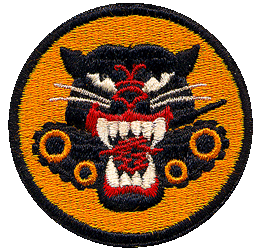 Frank Dixon
Frank Dixon
The following tribute was researched and written by Lowell Silverman. Lowell came across SSgt. Dixon while doing research on his grandfather, Dr. Robert Silverman, who served at the 32nd Station Hospital.
Biography: Frank Dixon was born on April 21, 1917. He was the son of Frank Dixon (James Frank Dixon in some sources, a farmer, 1884– 1936) and Gracie Caylor Dixon (1895–1998). He grew up in Covington County, Alabama, where he was recorded living with his family on the 1920 and 1930 censuses. He moved to DeFuniak, Florida prior to entering the service.
Dixon’s service number indicates he was a member of the Regular Army prior to the U.S. entry into World War II. Although his common name makes it impossible to be certain, he is very likely the 22-year-old Private Frank Dixon recorded on the census at Fort Benning, Georgia on April 12, 1940. Regardless, Dixon had been promoted to sergeant and was a member of Company “C,” 894th Tank Destroyer Battalion at Fort Benning by December 25, 1941, when his name appeared on a roster accompanying a Christmas dinner program. He had been promoted to staff sergeant by July 3, 1942 when he was photographed with the rest of his company at Fort Bragg, North Carolina.
The 894th Tank Destroyer Battalion shipped out for England in August 1942. Several months later, the unit was deployed to North Africa. The men of the 894th first saw combat at the Battle of Kasserine Pass during the Tunisian campaign in February 1943. After the Tunisian campaign, the unit moved to the Fifth Army Tank Destroyer Training Center outside Sebdou, Algeria to begin re-equipping from M3 to M10 tank destroyers. That fall, the 894th shipped out to Italy. After performing military police duties in Naples, they briefly returned to combat near Cassino before being withdrawn in preparation for the amphibious operation at Anzio.
The 894th Tank Destroyer Battalion arrived at the Anzio beachhead in late January 1944 and was ordered to support the British 1st Infantry Division. Unit records indicate that by this time, Staff Sergeant Dixon was platoon sergeant for 1st Platoon, Company “C.”
In his book, The Tank Killers: A History of America’s World War II Tank Destroyer Force, Harry Yeide wrote that on the morning of January 30, 1944, Staff Sergeant Dixon joined “a patrol of fifteen British riflemen to scout for gun positions that the TDs could use during the day’s planned advance. German troops spotted the patrol, opened fire, and killed every man except for Dixon and a British sergeant. The two men crawled forward and shot the crew of a German machine gun. When another MG opened up and killed the British sergeant, Dixon fell to the ground and pretended to be dead. A German soldier approached and fired his pistol into the ground beside Dixon. Satisfied, he took the American sergeant’s helmet, carbine, and pipe. Dixon lay still for forty-five minutes while German soldiers stood nearby talking. Finally, he saw his chance and crawled back to his M10.”
Staff Sergeant Dixon’s reprieve was brief. Yeide continued: “The advance kicked off […] when TDs carrying Tommies from the Irish Guards moved out. The M10s provided close support and engaged infantry and panzers that were carefully camouflaged and hard to spot beyond nearly point-blank range. One M10 KO’d a Volkswagen by driving over it. About 1530 hours, a hidden AT [antitank] gun put four rounds through both sides of Sergeant Dixon’s M10, killing him and wounding two crewmen. Sergeant Clark, who witnessed the action from five hundred yards distance, put four rounds of HE [high explosive] into the offending gun.”
A February 2, 1944 Company “C” morning report described the action as a “reconnaissance mission” rather than an assault: “30 Jan 44: 1st platoon went on a reconnaissance mission, 2 miles N.E. of Carroceto, Italy, at 1430 hours. One (1) M10 lost due to a direct hit by enemy AT Gun. SSgt Dixon KIA by enemy AT shell, in right hip and burned in tank. 1st Platoon returned to its regular position.”
Morning Report – February 2, 1944
The morning report only mentioned two Company “C” casualties at 1530 hours (rather than the three mentioned by Yeide): Staff Sergeant Dixon and Corporal Anthony H. Dahlhauser (1917–1992), who was seriously wounded by a shell. Corporal Dahlhauser was subsequently treated at the 300th General Hospital. Although he recovered enough to leave the hospital by August 1944, his wounds were so severe that he was discharged from the U.S. Army on October 27, 1944.
The Sergeant Clark who avenged Staff Sergeant Dixon’s death is not mentioned elsewhere in Yeide’s book, but was probably Sergeant Carman C. Clark (1916–1990). Clark was also a member of the company by December 25, 1941 and was assigned the duty of gun commander (that is, tank destroyer commander) as of September 4, 1943. Sergeant Clark was captured on February 4, 1944 when the Germans launched an attack against the Campoleone salient.
A March 16, 1944 article in The Florala News (Florala, Alabama) reported that Gracie Dixon was notified of her son’s death on February 23, 1944; she was subsequently presented with the Purple Heart that he earned. It appears that Staff Sergeant Dixon’s body was not recovered. He is memorialized on the Tablets of the Missing displayed at the Sicily-Rome American Cemetery in Nettuno, Italy. There is also a memorial (apparently a cenotaph) in Greenwood Cemetery in Florala, Alabama where his parents and one of his brothers are buried.
